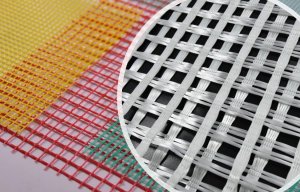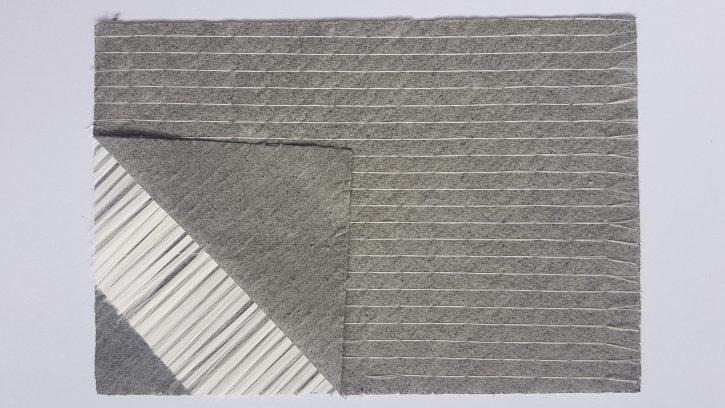
Rethinking civil engineering at ITM
Developments in lightweight construction are being driven by the automotive industry in particular but are also becoming increasingly important elsewhere in the transport sector

25th September 2020
Innovation in Textiles
|
Obertshausen
In this article, Karl Mayer Technische Textilien GmbH, a business unit of the Karl Mayer Group specialising in technologies for the production of technical textiles, discusses its solutions for lightweight composites.
Developments in lightweight construction are being driven by the automotive industry in particular but are also becoming increasingly important elsewhere in the transport sector. After all, every gram that can be saved in a truck leads to significant energy and cost savings.
If the unladen weight is lower, more freight can be transported, trips can be reduced, and fuel consumption lowered. Due to the high demands in daily transport, however, lightweight materials are only used in truck areas with relatively low loads, for trailer superstructures and installations.
Thermoplastic prepregs are becoming increasingly established, especially for the interior casing and thermal insulation of refrigerated containers and truck bodies. These consist of glass fibres and polypropylene and are mainly used as sandwich panels. Given the great application potential of thermoplastic fibre composite materials, their manufacturing process is constantly being developed further. Karl Mayer Technische Textilien GmbH, based in Chemnitz, is one company which is leading the way with innovations in this field.
Creating unidirectional fibre-reinforced tapes with SIM.PLY
To produce these desirable composite materials, the reinforcing fibres must be combined with the thermoplastic material – the so-called matrix. To this end, Karl Mayer Technische Textilien has developed the new SIM.PLY machine, which was launched at the ITMA in Barcelona in 2019. The innovative machine produces thermoplastic fibre-reinforced tapes and uses plastic in the form of films. As part of an inline process, the fibres are spread and impregnated with the plastic film by applying pressure and increasing the temperature. Processing using SIM.PLY is only designed for unidirectional fibre orientation at the moment, i.e. all fibres in the manufactured semi-finished materials lie in the direction of production, producing unidirectional fibre-reinforced (UD) tapes. However, fibre composite structures with multiaxial fibre orientations are in demand for many lightweight construction applications and Karl Mayer Technische Textilien also wants to meet this demand. The company therefore started a project to offer its customers manufacturing technologies for thermoplastic prepregs made from multiaxial materials and alternative raw materials for the thermoplastic matrix.
Processing multidirectional fibre reinforced structures with COP MAX 5
The COP MAX 5 multiaxial warp knitting machine was used in the project work to produce reinforcing structures with flexible fibre orientations for thermoplastic prepregs. In addition, textile product developers at Karl Mayer Technische Textilien also used commercially available glass fibres which had been given special coatings for this application.
Initially, the raw material was homogeneously spread on the UD 700 fibre spreading assembly unit to form 12-inch-wide fibre tapes; the area weight was approximately 225 g/m². The spreading process homogenises the area weight, thus resulting in constant fibre volume contents in the subsequent thermoplastic fibre composite.
In addition, the spread fibres can be impregnated more easily because the polymer flow paths between the individual fibre filaments are shortened, similar to the effects of inline spreading when using SIM.PLY. The spread tape was then fed to a COP MAX 5 – a first in process technology. The multiaxial warp knitting machine is actually designed for using carbon fibres with finite weft insertion. The use of textile glass fibre is now being tested for the first time. Although Karl Mayer Technische Textilien has the COP MAX 4 in its portfolio to process glass, it is not possible to feed spread fibre bands into this model.
Impregnation process with nonwoven polypropylene
Another innovation was the polymer combination material for the composite solution, using a nonwoven fabric rather than a polymer film, in contrast to SIM.PLY. In cooperation with a nonwovens manufacturer, it was necessary to investigate the suitability of these products as a raw material for the plastic component in thermoplastic fibre composites. The nonwoven polymer consisted of a polypropylene (PP) hot-melt nonwoven, produced using the melt-blown process. The melt-blown technology proved to be favourable for this application because it results in very fine filament diameters and low area weights. PP grades with very low melt viscosities were used to promote the impregnation of the fibres with the polymer: the nonwoven fabric is very easy flowing when melted and the individual glass fibres are very well embedded. In general, non-woven polymers offer advantages over their closed film counterparts thanks to their good air permeability, since the air can escape better from the fibre-plastic composite to be produced.
Stitch-bonding and impregnation
The PP nonwoven fabric for this project work had an area weight of approximately 45 g/m². The fibre material was fed into the COP MAX 5 as a layer above and below an intermediate layer of spread glass with a fibre orientation of 45° or 60° angles. The individual layers of the sandwich structure were then stitch bonded. When choosing the right warp knitting yarn, using a classic polyester variant proved favourable, because polyester yarn has a higher melting point than the PP hot-melt nonwoven fabric. This means it can withstand the subsequent impregnation process, thus ensuring the fibres are fixed permanently. The angular positions are not shifted while passing through the impregnation section. Initial investigations completed by the project partner in the field of nonwoven production yielded positive results.
Next steps
In order to offer customers, the most suitable complete solution for their individual requirements, Karl Mayer Technische Textilien is currently working on comparing the various production strategies for thermoplastic prepregs with unidirectional and multiaxial fibre orientation. This is based on the company’s existing portfolio of UD 700, COP MAX 5 and SIM.PLY machines. The focus is on the respective resulting material properties, machine productivity and possible raw material uses. As a result, Karl Mayer Technische Textilien is taking a further step towards becoming a system supplier.

Business intelligence for the fibre, textiles and apparel industries: technologies, innovations, markets, investments, trade policy, sourcing, strategy...
Find out more